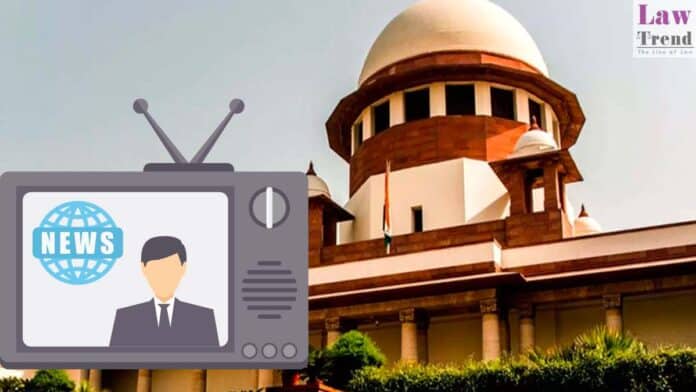The Supreme Court on Monday found fault with the existing self-regulatory mechanism to monitor TV news channels and sought the Centre’s response, saying it wants to make it “more effective”.
Making it clear that it does not want to impose any censorship on media, a bench headed by Chief Justice D Y Chandrachud stressed on the need for having an effective self-regulatory mechanism and said some channels went “berserk” during the coverage of actor Sushant Singh Rajput’s death case.
The top court asked the News Broadcasters Association (NBA), which is now known as News Broadcasters and Digital Association (NBDA) and has a self-regulatory mechanism, to take inputs from the chairperson of News Broadcasting and Digital Standards Authority, Justice (retd) A K Sikri, and its former chief Justice (retd) R V Raveendran, both former Supreme Court judges.
It noted that the self-regulatory mechanism can be strengthened after taking note of all existing material, including the inputs of former apex court judges.
The apex court also noted the maximum penalty which can be imposed on a TV news channel for violation of the self-regulatory mechanism is just Rs 1 lakh, which was fixed way back in 2008.
“We are completely with you that we must be circumspect about regulation by the government because we don’t want to impose a pre-censorship or post censorship on the media,” the bench, also comprising Justices J B Pardiwala and Manoj Misra, told senior advocate Arvind Datar, who was appearing for the association.
“We commend you for having a self-regulatory mechanism but that has to be effective,” it said, while hearing a plea filed by the association against the January 2021 observations by the Bombay High Court.
The high court had said media trials amounted to contempt of court and urged the press not to cross the proverbial “Lakshman Rekha”, as it found the coverage of actor Sushant Singh Rajput’s death case by some news channels as “contemptuous”.
It had observed that existing self-regulatory mechanisms could not take the character of a statutory mechanism.
As per information available on the NBDA’s website, it represents private television news, current affairs and digital broadcasters and is the collective voice of news, current affairs and digital broadcasters in India.
It says the NBDA currently has 27 leading news and current affairs broadcasters (comprising 125 news and current affairs channels) as its members.
The apex court issued notice to the Centre and others seeking their responses on the association’s plea.
“We are of the considered view that it would be necessary for this court to consider as to whether steps, which have already been taken for constituting a self-regulatory mechanism, are to be strengthened .,” the bench said.
During the hearing, when Datar referred to the media hype after Rajput’s death, the bench observed, “Because of the kind of frenzy after the death of that actor, everybody went berserk presuming it is a murder You pre-empt criminal investigation.”
“You say it is clear that, barring a few instances, almost all TV channels maintain self-restraint in telecast. I don’t know if you take a head count of the people in court, who will agree with what you say,” the CJI told Datar.
“What is the fine you impose?” the bench asked.
When Datar said it is Rs 1 lakh besides a public apology, the bench made it clear that the self-regulatory mechanism has to be made effective.
Also Read
“If you are going to impose a fine of Rs 1 lakh on the channels, is that effective?” it asked, adding in the last 15 years, the association has not considered it appropriate to raise the fine amount.
Datar said he will take instructions on this issue.
The bench said the fine must be in proportion to the profit made from the show that attracted penalty.
It noted Datar’s submission that the self-regulatory mechanism consists of a committee, which is chaired by a former judge of the apex court, and also that the panel had disposed of over 4,000 complaints so far.
It observed that the association’s self-regulatory body has to be more effective, and having a former judge of the Supreme Court as its chairperson is not enough as its remit is limited because of a set of guidelines.




